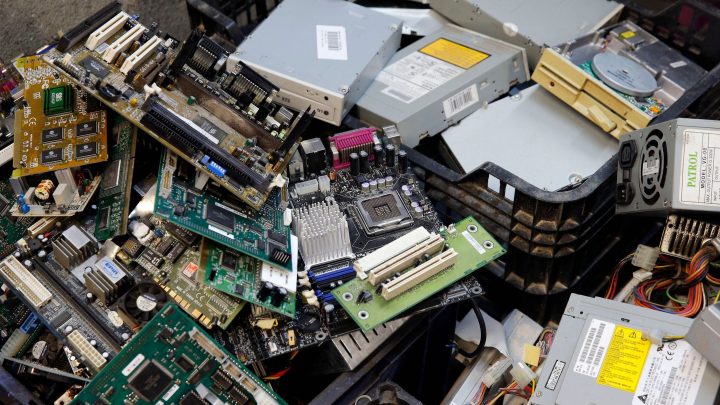
Think of your electronic waste as a mine of resources

Right before “Marketplace” went live Monday, fill-in host Amy Scott’s printer stopped working. It was annoying because one, she needed to print some stuff right then and two, because now she had a broken printer to deal with. If it can’t be fixed, that printer will become what’s known as e-waste — any electronic device with a plug or battery that’s at the end of its life.
The United Nations released a report Wednesday finding that only 22% of global e-waste produced in 2022 was properly collected and recycled. In Canada and the U.S., the rate was higher — about half of e-waste is recycled. But for consumers like Amy who just want to do the right thing with their old, broken printers, figuring out that right thing can be exhausting.
Personally, I have moved old electronics across state lines to avoid dealing with them. Now, there’s a not-small pile of them in my closet, including a laptop from, like, 2009. Digging through it makes me feel both guilt and nostalgia.
This pile is what Rochester Institute of Technology sustainability professor Callie Babbitt calls an urban mine because it’s filled with precious metals.

“There’s actually a higher concentration of gold in smartphones than there is in natural ores,” she said.
Babbitt said we need to stop looking at our old electronics as a chore and think of them as a cache of scarce materials that could be harmful if just thrown away but worth a lot to the right people.
“So there’s a big economic driver for recycling these valuable materials. And once they actually get into the system, they do get recycled,” she said.
But Babbitt added that a lot of consumers don’t know how to get their post-use devices into that system.
It varies depending on where you are. There are no federal regulations, and about half of states have what are known as take-back laws, which require companies that make devices to accept old versions.
“The brand that you might see on a TV, those manufacturers are required to set up or fund recycling locations,” said Jason Linnell, executive director of the National Center for Electronics Recycling.
He said e-recycling options — run by either companies or local governments — aren’t always well publicized. In many cases, that’s why we end up hanging on to an obsolete laptop for 15 years.
That’s not ideal for anyone, said Nathan Proctor of the Public Interest Research Group. He leads the organization’s “right to repair” campaign.
“The longer it sits in the dusty corners of our basements or whatever, the less value it has for the recyclers,” he said.
It’s a lot easier to sell a motherboard if it’s not wildly out of date, Proctor said. And we shouldn’t automatically put something in the broken pile the minute it stops working.
“You don’t have to take broken for an answer, you know. There is somebody who can help you fix that thing,” he said.
So, maybe it’s worth tinkering with that printer, Amy?
As for my old laptop … I’ll let you know where it ends up.
There’s a lot happening in the world. Through it all, Marketplace is here for you.
You rely on Marketplace to break down the world’s events and tell you how it affects you in a fact-based, approachable way. We rely on your financial support to keep making that possible.
Your donation today powers the independent journalism that you rely on. For just $5/month, you can help sustain Marketplace so we can keep reporting on the things that matter to you.











